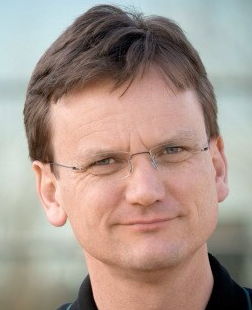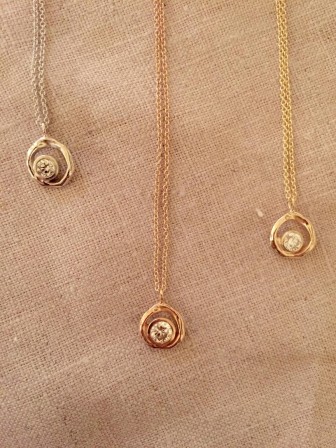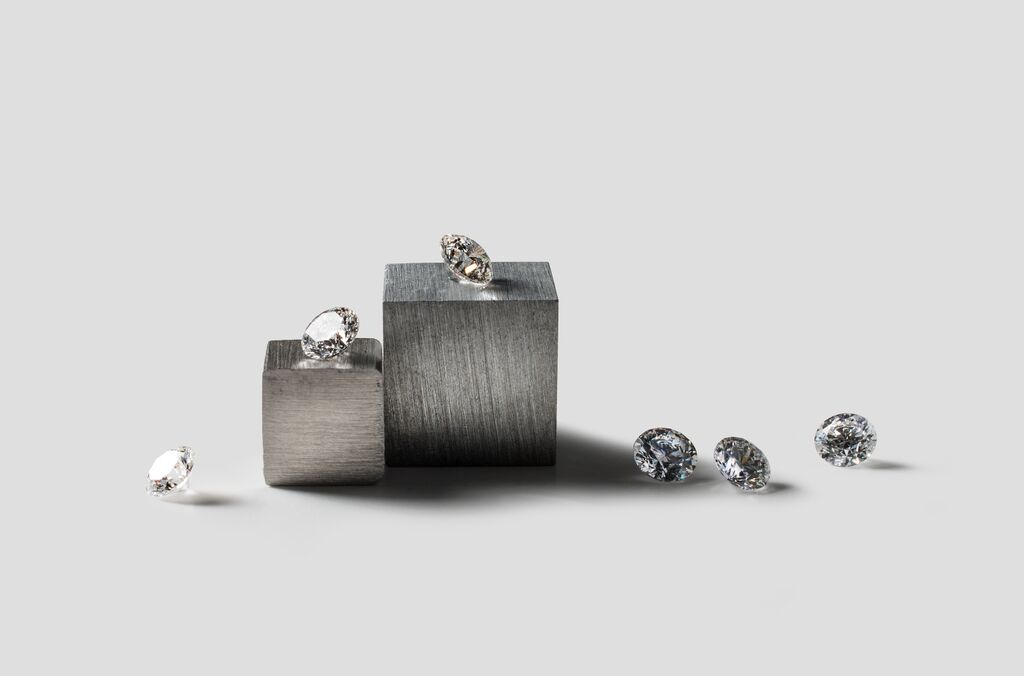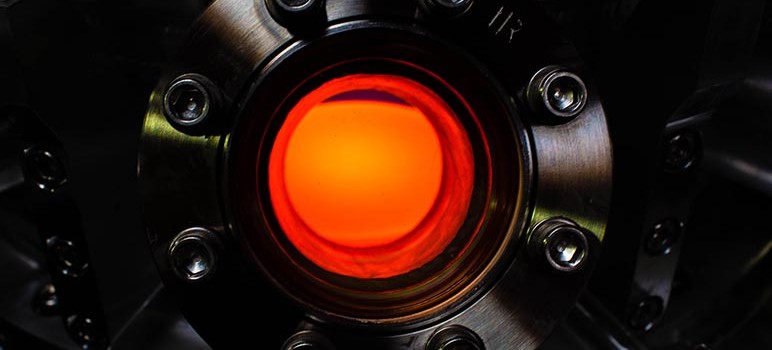Reeling from the Dot Com collapse and recession-inducing post-9/11 panic, Silicon Valley hoped to emerge from the early aughts as the Saudi Arabia of sun power. Private investment, federal subsidies and fears about climate change fueled a staggering clean energy boom.
One of the first to bet big on the sustainability sector was Martin Roscheisen. The inveterate entrepreneur launched Nanosolar in 2002 to make thin-cell solar cells as a cheap alternative to silicon. Thousands of companies followed.
But a decade later, with massive over-investment and price competition from China, California’s green tech bubble had burst. A host of sun-power startups—most visibly, Solyndra—failed spectacularly. Nanosolar, which raised a half-billion dollars in its first five years, shuttered its San Jose factory. Roscheisen set his sights on another industry and ducked into stealth mode.
In November, after three years under the radar, Roscheisen unveiled his latest venture—one that harnesses the power of the sun to a very different effect. Using some of the same technologies to make solar cells, Diamond Foundry puts a Silicon Valley spin on high-end, lab-made diamonds.
Unlike diamond simulants like cubic zirconia, these manmade stones aren’t a knockoff, Roscheisen stresses, but atomically identical to their earth-forged counterparts. He's pitching his diamonds as an ethical alternative to excavated gems and something singular in their own right.

Martin Roscheisen. (Image via Twitter)
“The diamond industry stood out to us as a very traditional one that needs to see its ‘Tesla moment,’” Roscheisen told Metro. “Before Tesla, electric car meant golf cart. Tesla changed the auto industry forever by first providing a truly viable choice. That’s what we are doing with diamonds—offering a viable choice for the first time.”
The ability to manufacture diamonds has been around for the better part of six decades, though the process remained cost prohibitive until relatively recently. Today, at least 10 companies create retail or industrial diamonds. But Diamond Foundry claims a proprietary breakthrough that makes it faster and cheaper to create gem-quality stones.
“It is very hard to grow pure white, jewelry-grade diamonds,” Roscheisen says. “This is what our technology can do.”
It starts with a “seed,” a thin slice of natural diamond. An 8,000-degree Fahrenheit plasma reactor “grows” the crystal by depositing carbon, layer upon layer. Borrowing this method called chemical vapor deposition from semiconductor manufacturing, the company says it can culture hundreds of diamonds up to nine carats in size in the span of a couple weeks. Some competitors employ variations on vapor deposition, while others use high-pressure techniques, detonating explosives or ultrasound.
Roscheisen—a Stanford University grad student in the same class as Google founders Sergey Brin and Larry Page—drew backing from 10 billionaires and a number of Silicon Valley heavyweights. Investors include Zynga founder Mark Pincus, Twitter co-founder Evan Williams and Facebook co-founder Andrew McCollum.
The company's highest-profile investor: Leonardo DiCaprio. The actor received an Oscar nomination for playing a gem smuggler in the 2006 film Blood Diamond, which depicts some of the ethical issues plaguing the conventional diamond industry.
Russell Shor, analyst for the nonprofit Gemological Institute of America, said Diamond Foundry has entered an intensely competitive market.
“We’re in a strange situation now in terms of diamond economics,” says Shor, who’s spent the last three decades working every level of the trade, from mines to dealers, retailers, research groups and industry media. “Supply exceeds demand. Quantity is going up, quality is going up and prices are going down. It’s really unprecedented.”
It’s too soon to tell what kind of an impact the synthetic sector will have on the overall industry, he says. However, the emphasis on sustainability and “conflict-free” sourcing seems to appeal to a younger generation of consumers. Millennials are less likely to buy a mined diamond, partly over concerns about child labor, regional conflicts and the environmental toll of mining, according to industry reports.
Claims that manmade stones are an ethical alternative can be misleading, though. “It implies that anything else is unethical,” Shor says, “which is not necessarily the case.”
Diamonds only became a fixture in the Western engagement ritual after De Beers trotted out its “diamond is forever” campaign in the 1930s. The slogan and attendant imagery trafficks traditional gender roles, while linking diamonds to emotions of love, envy and expectation—and the somewhat crass notion that a ring should cost someone a few month’s salary.
Once a global cartel, DeBeers has lost some of its luster. In 2011, DeBeers agreed to pay $295 million to American retailers and consumers for alleged price fixing. The company’s market share has steadily shrunk since the monopoly it held up until the 1980s; it now takes up 40 percent of the market. Meanwhile, over-supply has undermined perceptions of rarity.
“Does the ability to create within weeks what the earth takes billions of years to fashion take away from the romance?” Shor says. “That’s a matter of perspective.”
Rather than competing with the traditional diamond sector, lab-grown gems appear to have tapped into a parallel market. Diamond Foundry and its ilk expect to appeal to customers who might not otherwise buy diamonds. Younger consumers seem less sold on their mystique, preferring affordability and sustainability to convention.

Necklaces made by Christine Guibara using Diamond Foundry gems.
“Diamonds always give me a bit of a laugh,” says Ryan McCarty, a Stanford PhD candidate researching geology and environmental science. “It’s a funny mix of ideas, emotion, marketing and carbon, pairing things like ‘forever’ with a material that is metastable on the earth’s surface, and somehow making it one of the most symbolic and sought-after gemstones.”
Christine Guibara, a Peninsula-based fine jeweler, has noticed that some of her younger clients place more value on a low-carbon footprint than the perceived rarity of a gem.
“It totally depends on whom you talk to,” she says. “Some think that there’s more value in environmental sustainability, ethical mining practices and all that. For those people, they consider a lab-made diamond the only option. But there will always be people who want a natural diamond, too.”
Guibara is among 200 designers who sell through Diamond Foundry’s online marketplace. She hopes having a local diamond supplier will give her a chance to get unconventional cuts.
“A lot of times in the industry, it’s really hard to find something cut in an unusual way,” she says. “The capital is so high, so there’s a tendency to go with what’s already been done. But I think Diamond Foundry has more of a startup mind. It’s exciting to have that.”
As a student of science, Roscheisen also plans to make his high-tech bling available to researchers. For all their mythical associations as fragments of stars, vessels of spirits and tears of the gods, diamonds are incredibly practical. The crystalline carbon may symbolize love, but as the hardest naturally occurring mineral on the planet and viable silicon replacement in semiconductors, he says, they could also make computers a thousand times faster.

Diamonds created by Diamond Foundry, which cultures the stones in its San Mateo County lab.


A fascinating story.
Many questions and very few answers.
My perception of the “diamond industry” is that it has been controlled by a (probably “thuggish”) cartel for most of a century.
No one seems to know for sure what the real supply of diamonds looks like. It wouldn’t surprise me if someday the world discovers that somewhere in the remote hinterlands of South Africa there are vast fields of farm silos crammed to the brim with diamonds.
In my humble opinion, potential diamond entrepreneurs and investors need to keep their heads on straight and their money in their pocket. Invest in something safe, understandable, and predictable.
Buy a politician.
Thuggish Cartel is right SJO, I have been interested in in for 30 years. Some of the biggest producers of diamonds
are the Russian’s.
Between them and De Beers flooding the market with what is on hand they would likely crush the manufacturing market for years, much the way our domestic oil industry has done to OPEC.
How would you all feel about the 1 carrot diamond ring you bought your ladies falling to about a hundred bucks
pulse the price of gold that holds it?
“Darling don’t you think my finger would look better with an emerald on it?”
Has anyone thought about what happens to all those poor kinds in the mines when there is no market for their labor?
Diamond buyers aren’t only concerned about “conflict free sourcing”, they want gems that are conflict free from source to market.
Diamond Foundry’s claim to be an ethical alternative to mined diamonds doesn’t stand up to scrutiny. Some of their diamonds are cut and polished in Israel where revenue from the diamond industry is a major source of funding ($1bn/yr) for the Israeli military which stands accused of war crimes by the UNHRC, AI and HRW. Diamonds that fund war crimes are blood diamonds.
wardiamonds,
Tell someone who cares.
*****
Interesting article, but I had to LOL at this comment:
…younger clients place more value on a low-carbon footprint…
They don’t understand that diamonds are pure carbon? Thanx, gov’t .edu factories.
Re: the emerald alternative; emeralds have been produced synthetically for many decades. So has corundum (sapphires, rubies). But the real gems have held their value. Why?
The reason is that experts like GIA can easily tell real, mined diamonds, emeralds, rubies, etc., from mass produced synthetics. So long as people can tell the real thing from man-made, the genuine items will retain their value. It’s like the value of a vintage Ferrari compared with an identical looking kit model.
If industry can perfectly fake a real diamond, then of course all bets are off. But so far they haven’t been able to do that with any mass-produced, synthetic gem. There are always natural inclusions that in some cases enable experts to narrow down the production source to individual mines.
Dear Warmonger,
I suppose there is no chance of you driving a car as long as ISIS, Iran or Syria are selling fuel on the intentional market?
I think the synthetic diamond manufacturing process will be a boon to new technologies.
I imagine they need to tweak the vapor deposition process based on carbon particle size, and carrier gas (probably Argon, or Helium.) At 8,000 Fahrenheit, the “chemistry” changes. I would like to know more about the process. Using a “seed crystal” is a pretty basic synthesis method.
As far as being “real”. These diamonds are. They are manufactured instead of dug out of the ground. One can always look at the refractive index, inclusions (or more likely lack thereof), and lack of trace metals to indicate that these are synthetic gems.
I would like to read more about how a diamond crystal can be a 1,000 times faster than current computer chips. What is the basis for that? Currently, tunneling, and/or other “quantum effects” occur with silicon below 0.2 microns or so. I guess I should have gone into manufacturing instead of government regulation. This stuff is fascinating to me.
As a third generation diamond wholesaler , I think the diamond trade may have found its future . Ethically sourced and produced diamonds has hit a nerve with the millenial generation. They will vote with their pocketbooks. This is not going away.
I am also quite intrigued with the wholesale markets response so far, clearly apprehensive and unsure of which side to take in the subject. India’s diamond market has taken defensive steps to protect their position as the #1 cutter of diamonds in the world. This train has left the station, can’t stop it now.
Well, well, well.
http://www.zerohedge.com/news/2016-02-15/russia-set-flood-diamond-market-firesale-167500-carats
“Russia Set To Flood Diamond Market With Firesale Of 167,500 Carats”
> I think Russian know how to make perfect diamonds in the lab. They will sell it by the kilos.
. . .
> Now the price may collapse to the same as Amethyst…$2/Carat.
. . .
> Diamonds are common, their only value is their artificially contrived cartel value and yes I have the chops to say this authoritatively.
. . .
> If there were no cartel, the average 3 carat diamond with exceptionally good quality would sell for barely $300 if that.
. . . .
> Diamonds are so plentiful that most 1 carats of average quality should sell for $20.
. . .
Surprise, Surprise, Ho Hum!